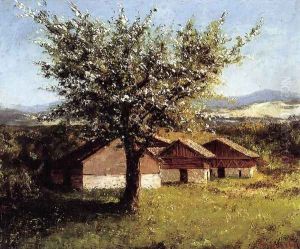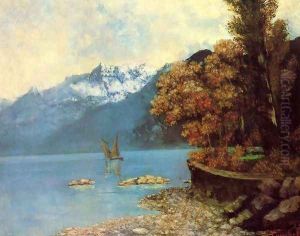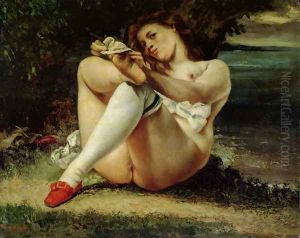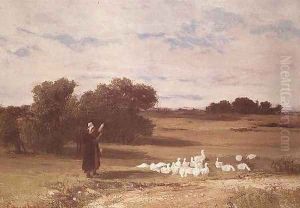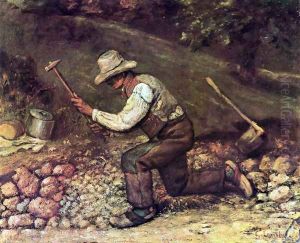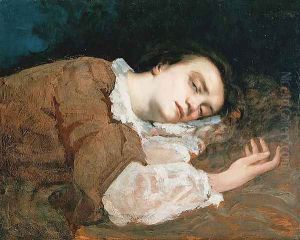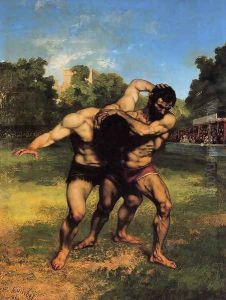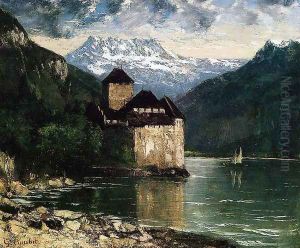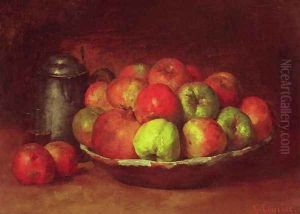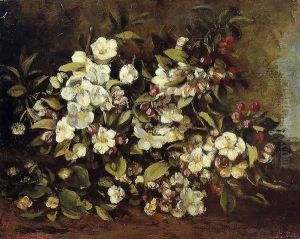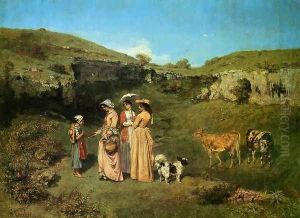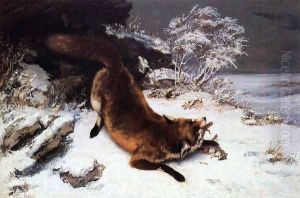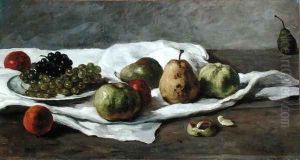Gustave Courbet Paintings
Gustave Courbet was a pivotal French painter of the 19th century who led the Realism movement in European art. Born on June 10, 1819, in Ornans, France, he grew up in a prosperous farming family, which provided him with a comfortable upbringing. Courbet went to Paris in 1839 to study law but quickly devoted himself to painting. He studied at the Atelier du Suisse and was influenced by the works of the Old Masters in the Louvre.
Courbet gained notoriety in the 1840s with his provocative works that challenged the conventional academic art of the time. His commitment to depicting the unvarnished truth of everyday life, without idealization, set him apart from his contemporaries. His masterpieces such as 'The Stone Breakers' (1849) and 'A Burial at Ornans' (1849-50) were revolutionary in their subject matter, portraying the lives of ordinary people on a grand scale typically reserved for historical and religious paintings.
Throughout the 1850s and 1860s, Courbet's reputation continued to grow. He painted a wide range of subjects including landscapes, seascapes, hunting scenes, nudes, and still lifes. His work was characterized by a bold technique, solid compositional structures, and a keen observation of physical reality. One of his most controversial works was 'The Origin of the World' (1866), a frank depiction of female nudity.
Courbet's political views were as radical as his art. He was an active socialist and took part in the Paris Commune of 1871. Following the fall of the Commune, he was arrested and imprisoned for his involvement, particularly his role in the dismantling of the Vendôme Column, a symbol of the imperial regime.
After his release from prison, Courbet spent the last years of his life in exile in Switzerland, where his work turned towards more serene landscapes and still lifes. He continued to paint, although his health and financial situation deteriorated. Gustave Courbet died in La Tour-de-Peilz, Switzerland, on December 31, 1877. His legacy is that of a trailblazer who opened new possibilities in the world of art by insisting on the portrayal of real life, irrespective of the norms and expectations of society and the art establishment.


